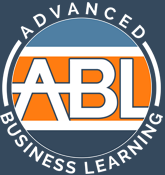Phoenix Cybersecurity Training School Offers New Learning Experience
As stout advocates against “learning decay” (the loss of retention of learned material over time) Advanced Business Learning (ABL) has developed a unique process that not only fights learning decay but helps students retain and relearn over time.
E-Learning (or web-based curriculum) done right involves working with the organization’s subject matter experts to distill the key skill-based learning elements and creating actionable scenarios the participant can immediately apply on their job. Couple this with targeted reinforcements to ensure just in time, just as needed rapid learning transference to the job.
To help stem this learning decay over a period of time and ensure the transfer of learning to actual job performance, a Continuous Learning System (CLS) should be incorporated into any learning solution. This is an inventory of tools and content designed to enhance learning sustainment by delivering reinforcement training in live, virtual, or blended environments.
This “menu” approach is intended to be “mixed and matched” and configured based on specific requirements, situations, and readiness levels. Examples of CLS elements include:
- Meetings in a box: Interactive discussions about best practices. Sustainability guides provide specific actions participants will take before, during, and after courses to promote the transfer and sustainability of learning
- E-toolkits/Mobile Learning: Electronic cache of performance application, reinforcement, and support tools for easy access to updated course materials. Posted content may include, but is not limited to, Best Practice analyses, lessons learned, job aids, media assets, sample communications, templates, social media sharing tools, blogs, technical manuals
One example of Mobile learning or M-learning is to create targeted learning at the fingertips of users. This can be accomplished via Quick Response Code (QR Codes) posted on key equipment that links to a Learning Management System providing immediate access to instruction manuals, videos, job aids, micro-learning elements and scenarios on how to use the equipment to help the individual be effective in working with that specific equipment.
Users with a camera phone/smart tablet/laptop equipped with the correct reader application can scan the image of the QR code to display text, contact information, connect to a wireless network, or open a web page in the browser. This act of linking from physical world objects is termed hard linking or object hyperlinking. QR codes can be used to log into websites: a QR Code is shown on the login page on a computer screen, and when a registered user scans it with a verified smartphone, they will automatically be logged in. Authentication is performed by the smartphone which contacts the internal server.
ABL’s unique approach to E-learning methods of training and processing information with continual technology-based reinforcement has proven to be a tactical advantage for employers looking to train their workforce. Employees are out-of-pocket for a short amount of time and return to work with a new base of expertise and the tools to retain the curriculum they just absorbed without a steep drop off from learning decay.
